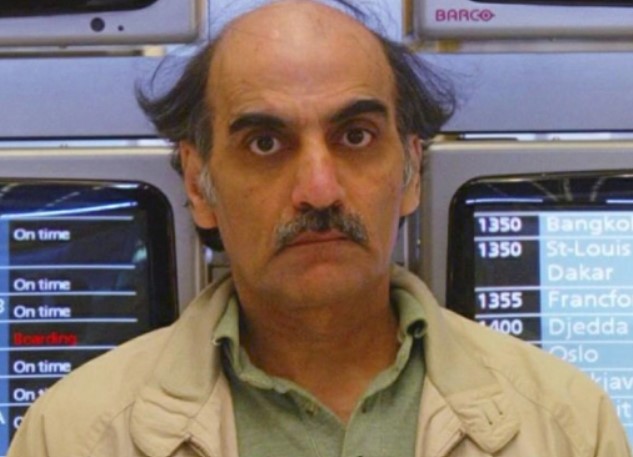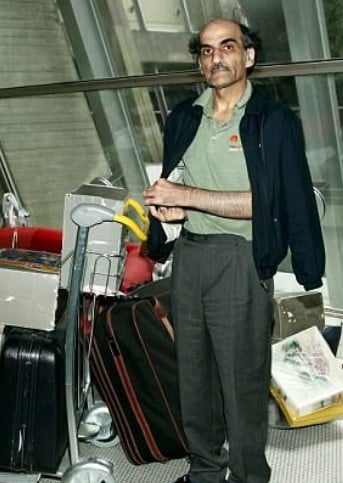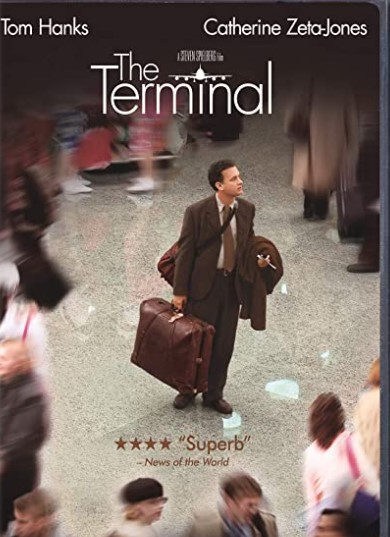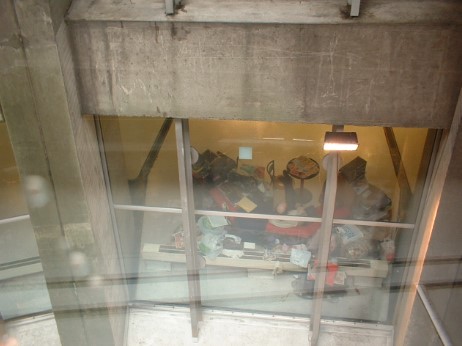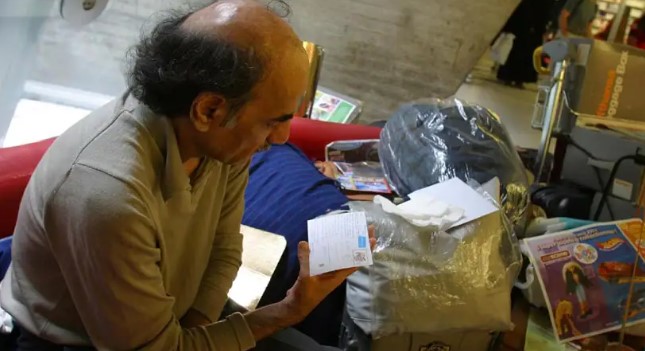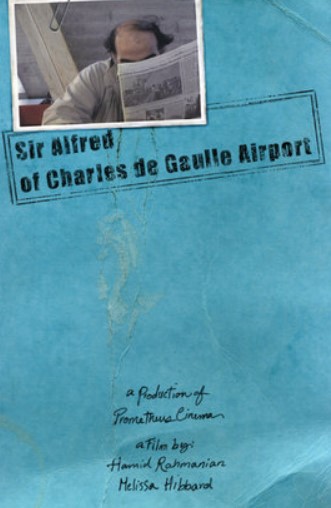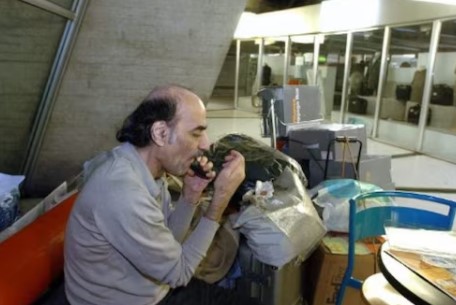Mehran Karimi Nasseri Age, Death, Wife, Family, Biography & More
Quick Info→
Death Date: 12/11/2022
Hometown: Soleiman, Iran
Age: 76 Years
| Bio/Wiki | |
|---|---|
| Nickname | Alfred [1]Snopes |
| Other name | Sir Alfred Mehran [2]Snopes |
| Profession | Activist |
| Known for | Being the author of the book, The Terminal Man, which inspired the 2004 film The Terminal |
| Physical Stats & More | |
| Eye Colour | Black |
| Hair Colour | Salt and Pepper (Semi-bald) |
| Career | |
| Personal Life | |
| Date of Birth | Year, 1945 |
| Birthplace | Anglo-Persian Oil Company in Masjed Soleiman, Iran |
| Date of Death | 12 November 2022 |
| Place of Death | Charles de Gaulle Airport, Paris, France |
| Age (at the time of death) | 76 Years |
| Death Cause | Heart attack [3]BBC News |
| Nationality | • Iranian (until 1977) • Stateless (1977–2022) |
| Hometown | Soleiman, Iran |
| Food Habit | Non-vegetarian [4]The Guardian |
| College/University | University of Bradford, UK |
| Educational Qualification | 1976: Bachelor's degree in Yugoslav studies at the University of Bradford, UK |
| Relationships & More | |
| Marital Status (at the time of death) | Unmarried |
| Family | |
| Wife/Spouse | N/A |
| Parents | Father- Abdelkarim (an Iranian doctor) Mother- Simon (a nurse from Scotland) |
| Siblings | Brothers- 4 Sisters- 2 Note: One of his brother's name is Cyrus who is a businessman. His all brothers and sisters lived in Tehran, except one sister who was a dentist in Luxembourg. One of his siblings worked in a bank, another worked as a chemist, and another worked for state television and radio. |
Some Lesser Known Facts About Mehran Karimi Nasseri
- Mehran Karimi Nasseri (1945 – 2022) was an Iranian refugee. He lived at the basement shopping mall of Terminal 1 at Charles de Gaulle Airport from 26 August 1988 until he was hospitalized in July 2006. In 2004, he released his autobiography The Terminal Man, which inspired the 2004 film The Terminal. He died on 12 November 2022 at Terminal 2F of the same Airport, where he began living again a few weeks before his death.
- After the retirement of his father, Mehran Karimi Nasseri’s family moved from the Anglo-Persian Oil Company in Masjed Soleiman to Tehran in Iran. His father died of cancer in 1967 when Alfred was twenty-two years old. Soon after the death of his father, his mother banished him from the family and told him that she was not his real mother. She indicated to him,
He was, in fact, the bastard son of an affair between his father and a Scottish woman, perhaps from Glasgow, who had worked as a nurse for the Anglo-Iranian Oil Company. In order to protect her husband, who would have been sentenced to death by stoning for adultery, she had pretended the Nasseri was hers.”
- Mehran Karimi Nasseri claimed in many media interviews that in 1977, he argued with his mother for his father’s property and threatened her to sue in court. Under a mutual agreement, he received some money from his mother to pursue his higher studies in the UK, where he used to get a monthly stipend during his college days. However, suddenly, his stipend was stopped by the UK government following which he tried to call his family in Tehran over the issue. He did not receive any reply from his family so he went back to Tehran where he was detained, arrested, and imprisoned claiming that he was photographed by some Iranian agents in England during the Iranian revolution when he participated in the protests against the Shah. When he was in prison, his mother tried hard to release him by bribing the higher officials. This granted him his immigration passport on the condition that he would never return to Iran again. He did the same and started finding another country, which would accept him as a refugee. Mehran Karimi Nasseri then planned to visit Glasgow in the hope to find his birth mother.
- In 1981, the United Nations High Commissioner for Refugees in Belgium granted him refugee status after a long battle. Reportedly, he began with England and appealed to at least seven countries for asylum including Belgium. Consequently, he was granted permission to live in many other European countries; however, after some time, this permission was disputed and the investigations revealed that Iran had never expelled Nasseri during the Iran revolution. In Belgium, he settled in Brussels, where he started working in a library, studying, and receiving social aid.
- In 1986, with his saved money, Mehran Karimi Nasseri decided to settle down in the United Kingdom and to find his British mother. Reportedly, he applied for the same; however, in 1988, his briefcase was stolen, which lost his official documents. It was claimed that Nasseri already mailed his official documents to Brussels and lied that they were missing. It was in the news that he boarded to London to apply for citizenship, but at the airport, he failed to present a passport to the British immigration officials and then returned to France.
- Soon after Mehran Karimi Nasseri arrived in France, the French authorities initially arrested him; however, later, it was officially announced that he had no country of origin, where he could return so he was released with permission to enter the France airport legally. After that, he started living at the Terminal 1 of the Charles de Gaulle Airport in Paris, France. In France, Christian Bourget, a French human rights lawyer, took over his case.
- In 1992, his case was presented in a French court, which stated in its verdict that Nasseri entered France legally and could not be expelled from the airport; however, it could not allow him to enter France. Thereafter, Mehran Karimi Nasseri made many attempts to issue new documents from Belgium, but the Belgium authorities wanted him to present himself in person to carry on the legal procedure.
- In 1995, Mehran Karimi Nasseri was allowed to travel to Belgium by the Belgian authorities with an agreement that he could only reside in Belgium under the supervision of a local social worker. However, he refused to do so as and stated that he originally wanted to enter the UK. Later, he was granted residency in both France and Belgium. These countries listed him as an Iranian rather than British, and his name was not written as Sir Alfred Mehran in the official documents, therefore, he refused to sign the residency papers. In a media talk, his lawyer, Bourget mentioned that he felt frustrated when Nasseri refused to sign the documents. His family mentioned in a media interview that Nasseri was living a life that he wanted to live. The Guardian described Nasseri’s living area in one of its articles. It cited,
It was actually two benches pushed together, about eight feet long in total and gently curved, just about wide enough to sleep on if he kept his hands tucked under the pillow.”
- In 2003, Mehran Karimi Nasseri received an amount of US $250,000 from DreamWorks production company, owned by Steven Spielberg, for the rights to use his story. However, Steven Spielberg did not use his story in the film, The Terminal.
- At the end of July 2006, Mehran Karimi Nasseri got hospitalized and left his sitting place at Terminal 1 of the Charles de Gaulle Airport, which was later dismantled. In January 2007, he was relieved from the hospital, and the French Red Cross branch of the airport looked after him. He then lived in a hotel near to airport for a few weeks.
- Mehran Karimi Nasseri was then transferred to an Emmaus charity reception centre in Paris on 6 March 2007. From 2008 to till Nasseri’s death in 2022, he had been living in a Paris shelter. Soon after his death, the Associated Press reported in its news article that he had been living at the airport a few weeks before his death.
- During his stay at Terminal 1 in the Charles de Gaulle Airport, Mehran Karimi Nasseri used to spend his time reading books, writing his diary, and studying economics for eighteen years. He had his luggage with him. According to some media sources, the employees at the airport used to give him food and newspapers. Many renowned journalists often covered his story in their editions and provided him with letters of support.
- Mehran Karimi Nasseri, along with the British author Andrew Donkin, published Nasseri’s autobiography ‘The Terminal Man’ in 2004. The Sunday Times reviewed his autobiography as brilliant. It cited,
Profoundly disturbing and brilliant.”
- The 1993 French film ‘Tombés du ciel’ earned its inspiration from Nasseri’s story. The main cast of the film was Jean Rochefort. The film was internationally released with the name Lost in Transit.
- In 1998, the British music composer Jonathan Dove released ‘Flight,’ an English-language opera in three acts. Later, it premiered at the Glyndebourne Opera House. In March 2006, Flight received the Helpmann Award at the Adelaide Festival Theatre.
- Later, many short films and documentaries such as “The Fifteen-Year Layover”, written by Michael Paterniti, and The Best American Non-Required Reading were released on his life. In 2000, a documentary film Waiting for Godot at De Gaulle was released by Alexis Kouros.
- In 2001, a mockumentary titled ‘Here to Where’ based on his life was released by Glen Luchford and Paul Berczeller. Nasseri was featured in this mockumentary. In the same year, a documentary titled Sir Alfred of Charles De Gaulle Airport was released by Hamid Rahmanian and Melissa Hibbard.
- Reportedly, the character Viktor Navorski (Tom Hanks) in the film ‘The Terminal’ in 2004 was inspired by the life of Nasseri. However, the websites, publicity materials, and the DVDs of the film never mentioned that the inspiration for the film was Nasseri’s life. Earlier this year, in September 2003, it was published in The New York Times that his story was bought by Steven Spielberg to make his film The Terminal in 2004. During the same time, the leading media house Guardian cited that Steven Spielberg paid Nasseri US$250,000 through his company DreamWorks production to buy the rights of Nasseri’s life story. In 2004, the Guardian claimed that Nasseri was once spotted by them draping the advertisement poster of Spielberg’s film around his suitcase.
- It was in the news at that time that Mehran Karimi Nasseri was excited about the film The Terminal, but never received the chance to watch this film in the cinemas.
- According to Mehran Karimi Nasseri, he liked eating a MacDonald’s egg and bacon croissant for breakfast and a McDonald’s fish sandwich for dinner. [5]The Guardian He liked smoking a few Thai cigarettes every day. [6]GQ In 2003, a media reporter shared his daily routine work in an online article. The reporter penned that Nasseri had the choice to use two bathrooms at the airport. The reporter wrote,
He had his choice of two nearby bathrooms; he preferred the smaller and quieter of the two because it was closer to his bench and had a shower.”
References/Sources:

